How to Install on Linux
Pre-requisites
This installation guide assumes that you have already set up a Linux VM on Azure and are ready to install the agent.
Before installing the agent on a Linux VM, ensure you have the latest version of PowerShell installed. Check out Installing PowerShell on Linux for more information.
You will also require the .net core framework. Check out Install .NET on Linux for instructions on this.
You will need administrative privileges to install the agent.
Installing the Agent
Follow along with the below instructions to install and configure the Loome Agent on an Azure Linux VM.
Complete the Agent configuration wizard
On the agent slide-out, click the Download Agent Installer button to download the PowerShell installation script.
Use the copy button to copy the PowerShell command to execute the installation script.
Also, take note of the installation location for future reference.
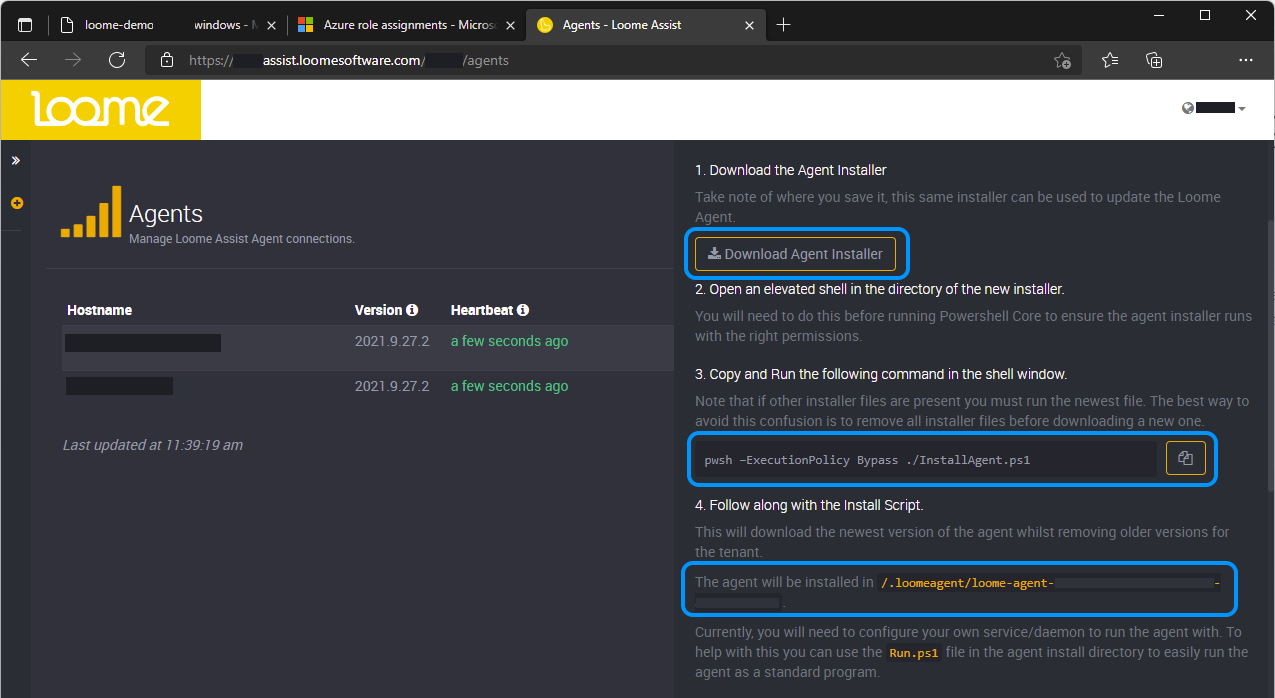
Installing on Linux
Copy and run the following command in Linux shell.
sudo pwsh –ExecutionPolicy Bypass ./InstallAgent.ps1

You can also use the script with the silent install option. It will proceed with the agent installation by selecting the default options for any prompts. It will choose “Y” for confirming the installation of the agent, and “N” for installing SnowSQL and Microsoft Genomics as they are not used in Loome Assist.
To use silent install, select the checkbox beneath the install script.
Copy the script and paste it into your installation window, Linux shell, and run the script.

The agent installer will pause for a few minutes while it downloads the agent.

If prompted to install SnowSQL or Microsoft Genomics, enter N and press enter. These feature are not required for Loome Assist, they are used by other Loome modules.
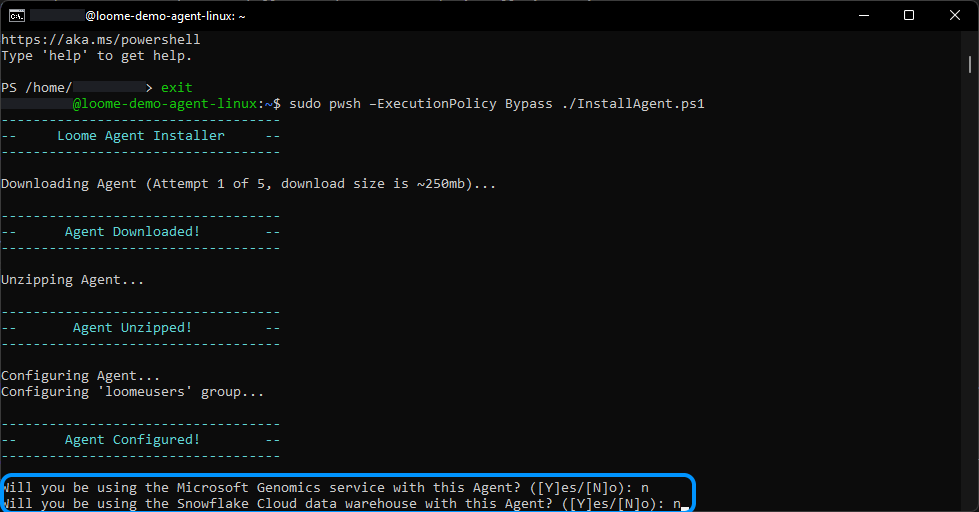
If you are running on a system that supports systemd, you will be prompted to set up a service/daemon to run the agent. Provide a name to run the service as, this can be the same name as the installation directory, i.e. loome-agent-guid.

Once completed, you should see a green message indicating that the service has started. You will also see the agent installation location and service name, take note of these for your own reference.
If your system does not support systemd, you will need to manually start the agent by running sudo dotnet Loome.Agent.dll
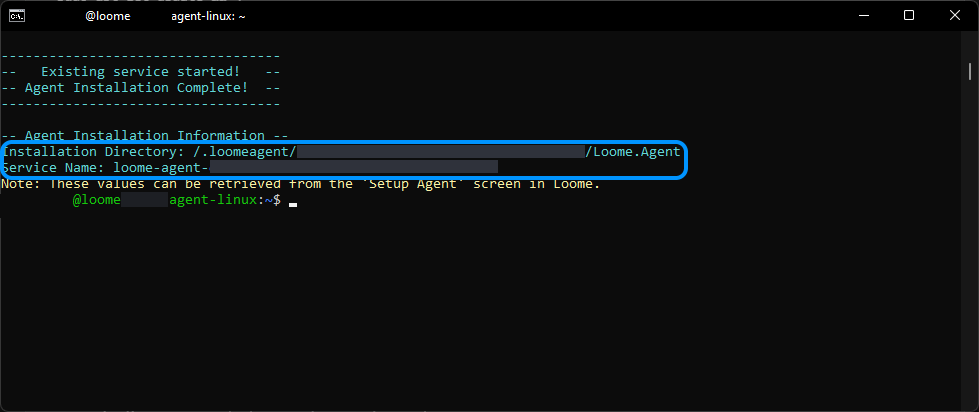
Completing additional configuration in the Azure Portal
Before we can use the Agent, we need to complete additional configuration on the Azure Linux VM containing the Agent.
We will configure the Agent with a Managed System Identity, and then provide it permissions to provision and manage resources within the Subscription.
Browse to portal.azure.com and locate the Resource Group where you provisioned the Azure VM and then click on it.
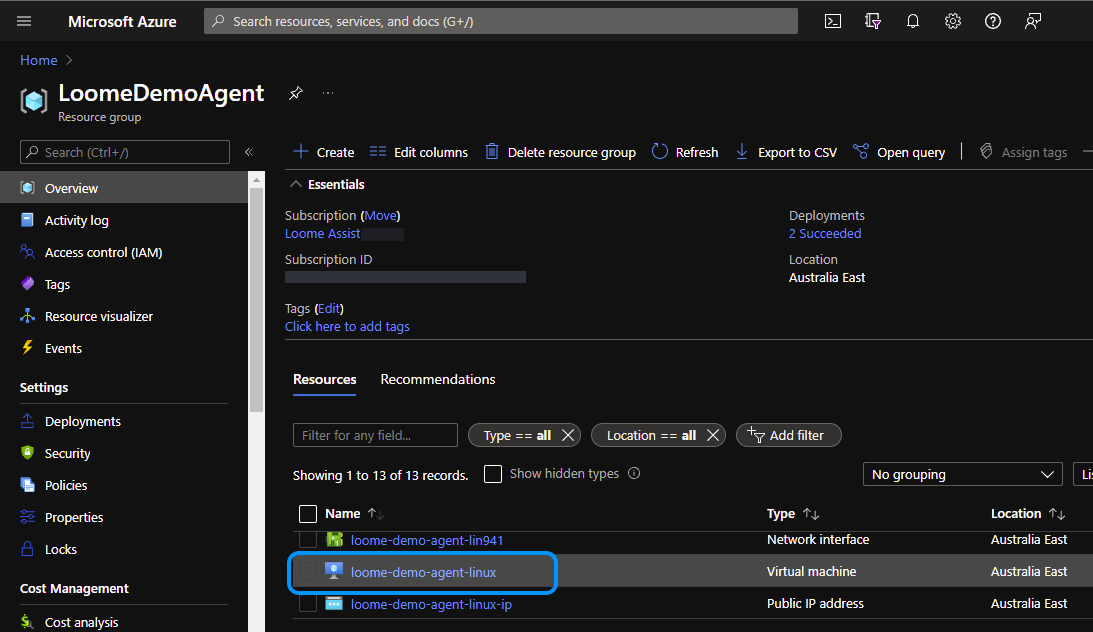
Locate the Identity menu option and click on it.

Under the System Assigned (preview) tab, click the On toggle for the Status.
Click the Save button above.
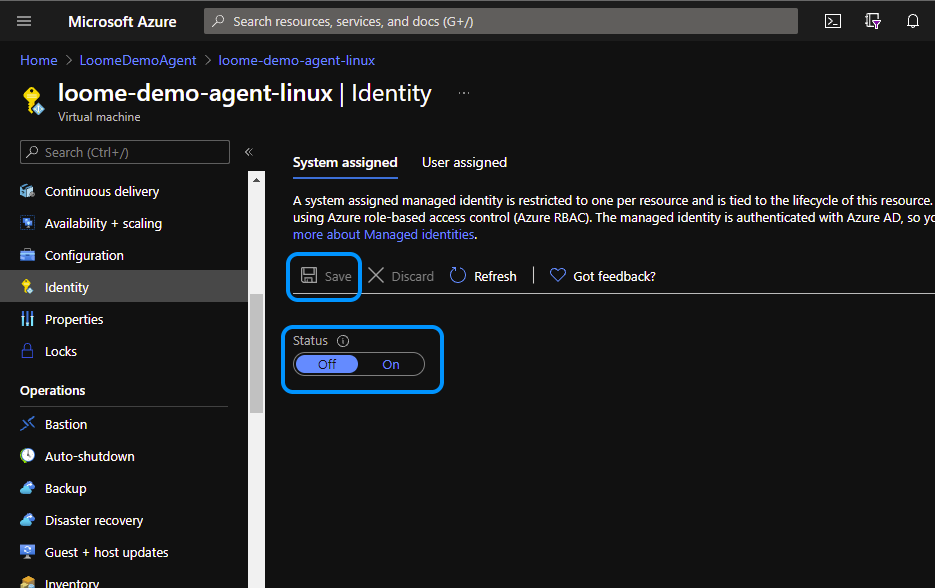
When prompted, click Yes to the confirmation.
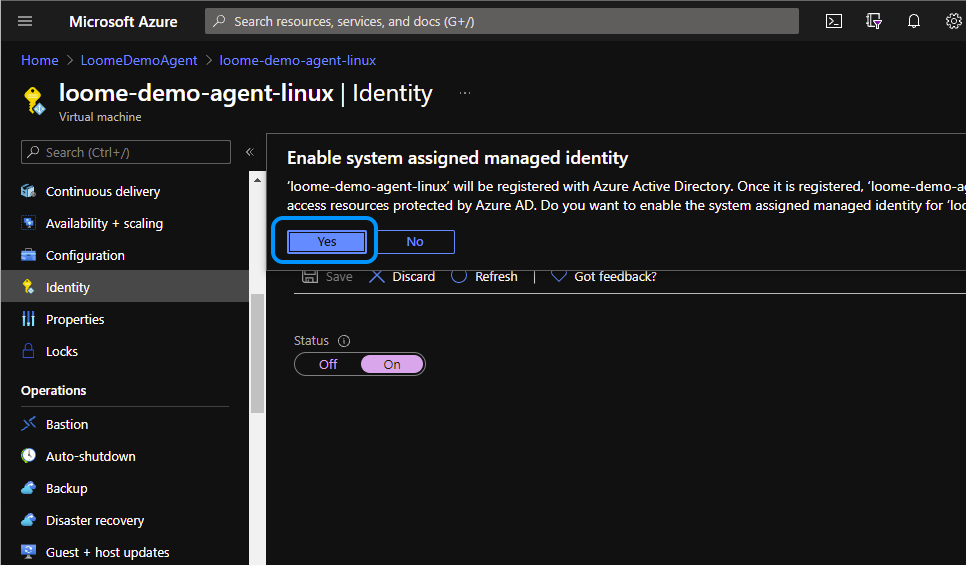
Now click on the Azure Role Assignments button.

Click the Add Role Assignment (preview) button to add a new Role Assignment.
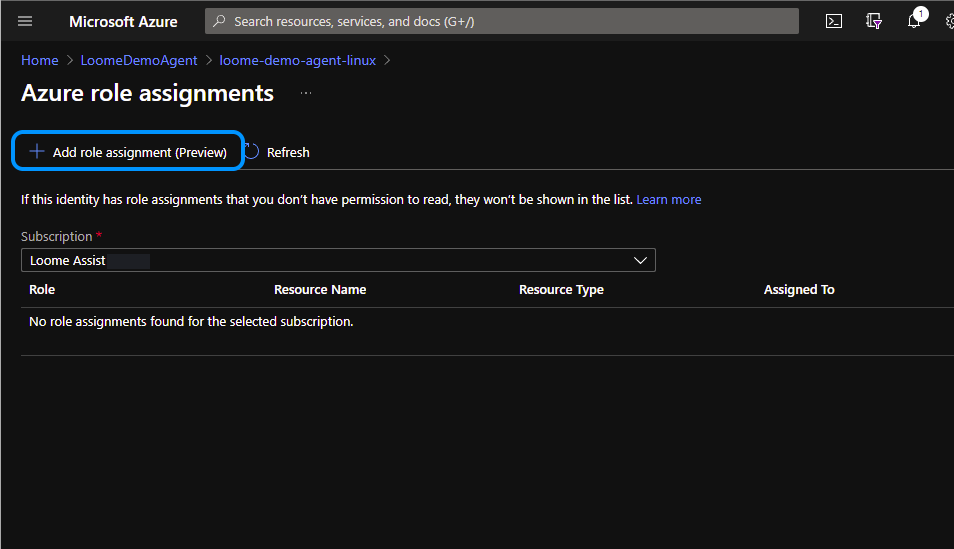
Select Subscription for the Scope, Select your Subscription, and then select Contributor for the Role.
Click Save to add this Role Assignment.
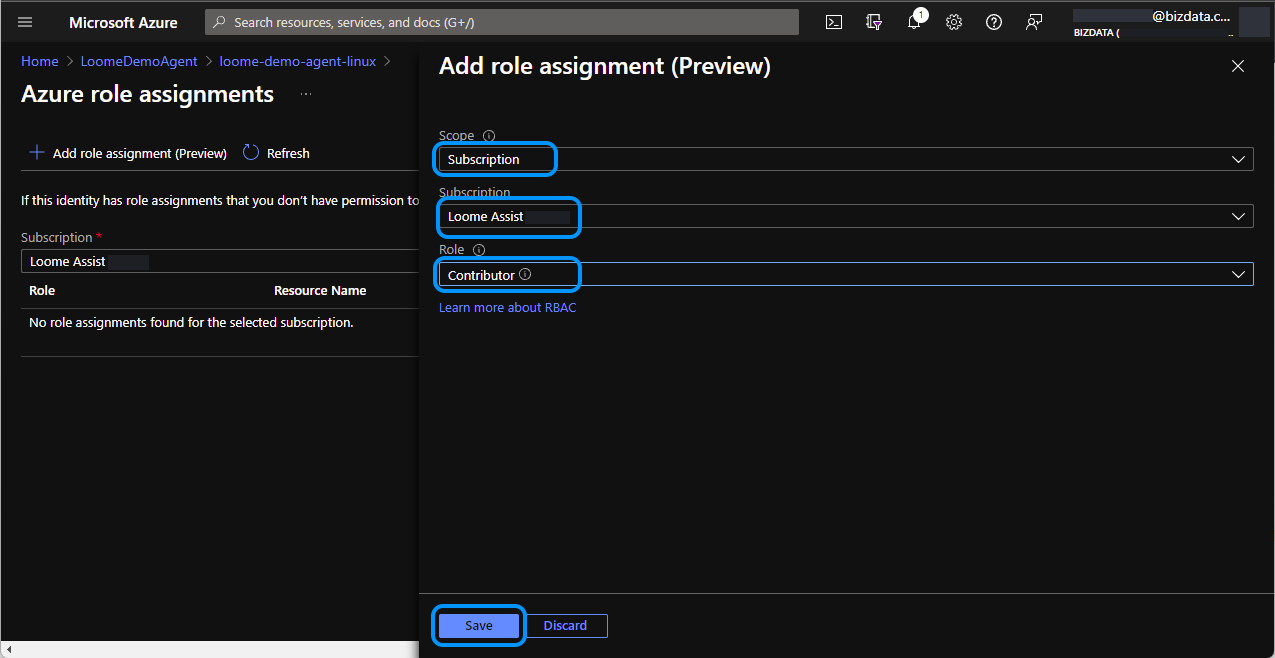
Repeat this step until you have all of the Roles in the below table assigned.
| Scope | Subscription | Role |
|---|---|---|
| Subscription | Your Subscription | Contributor |
| Subscription | Your Subscription | User Access Administrator |
| Subscription | Your Subscription | Resource Policy Contributor |
Your Role Assignments should look like this once completed.
Click on the Agent name near the top left of the screen.
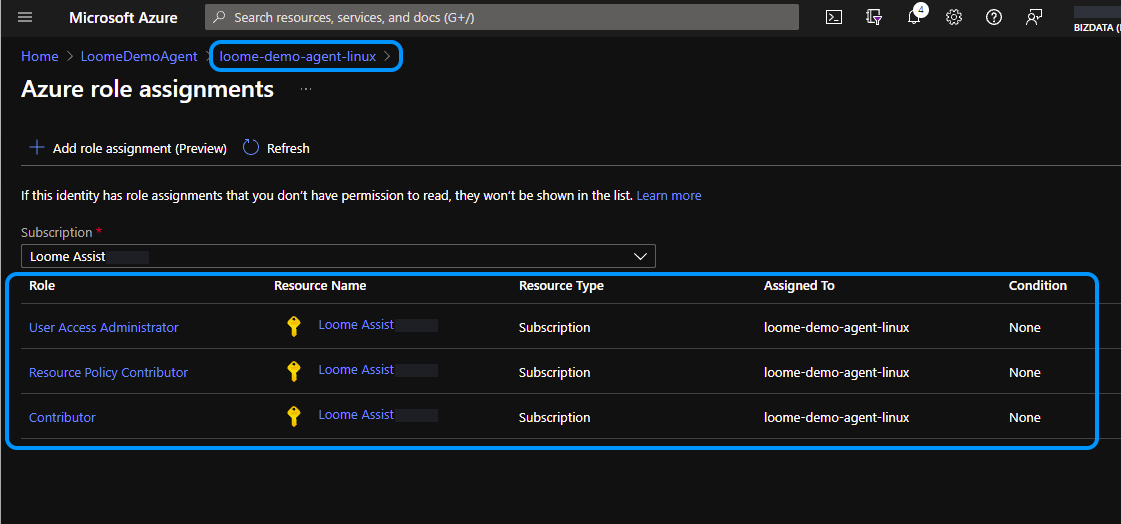
Now lets restart the Azure VM so the Agent can connect to Loome Assist.
Click on the Restart button near the top.
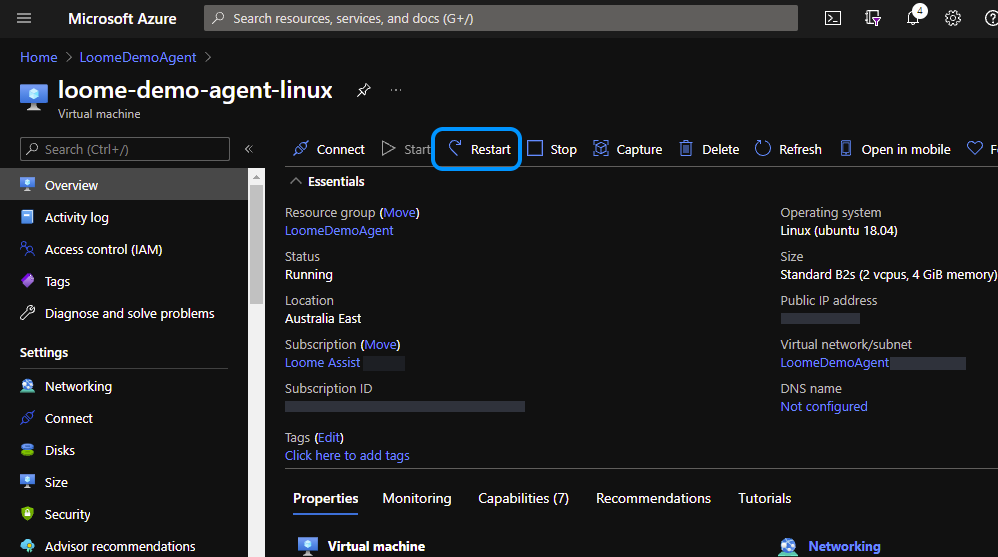
Click Yes to the confirmation message.
This process can take several minutes, you can remote in to the VM after 5 minutes and verify that the VM is running.
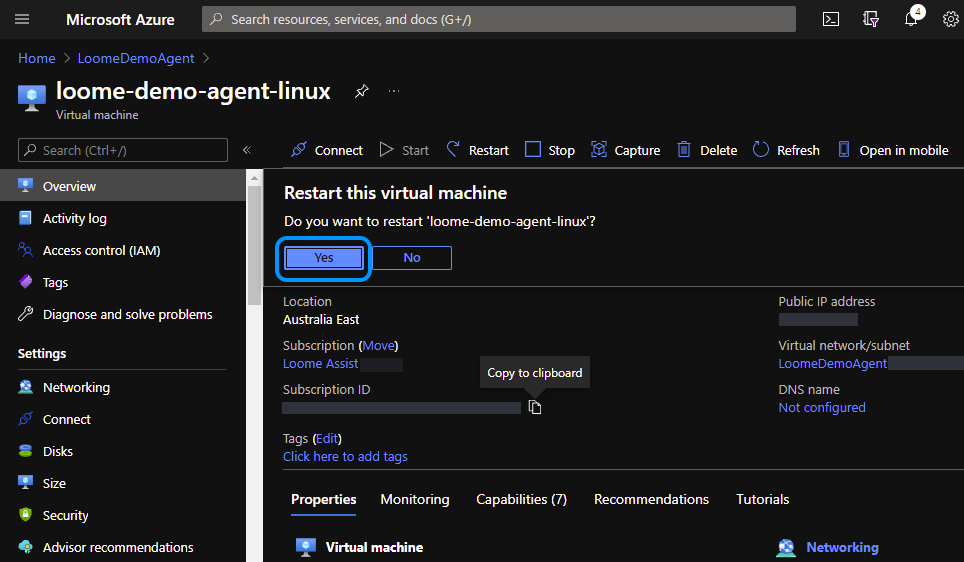
You should now be able to go back to the Loome Assist Agent page and confirm that the Agent is connected.
The Agent will display a green status if everything has been configured successfully.
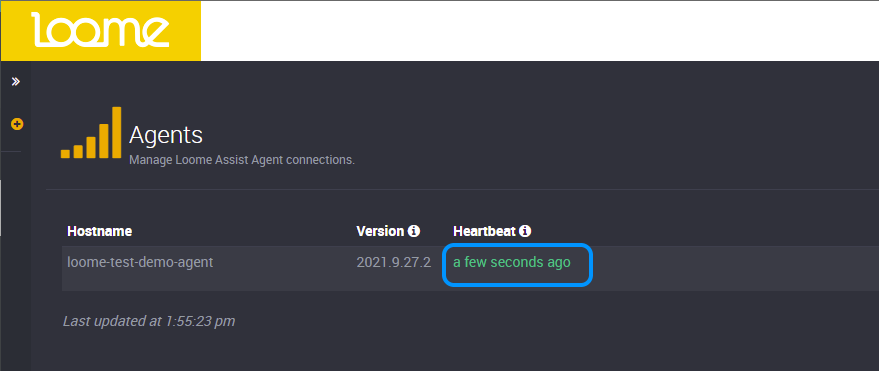
Additional Agent Configuration
You can optionally configure additional agent settings based on your needs.
- If you wish to configure Microsoft Teams integration for Loome Assist, check out the documentation here.
- If you need to configure Firewalls, Proxies, or Anti Virus software then check out the Additional Agent Configuration.
Linux Considerations
Service Requirements
The installer currently supports configuring the agent on Linux as a systemd service. This means that whilst the Loome agent may run on any platform that supports .NET Core , automatic agent service configuration through the install script is only available to distributions that support systemd.
“loomeusers” Group
The installer will create a new group called loomeusers on install, this group is used for managing file permissions in the /.loomeagent directory and so it is a requirement that the group is created.